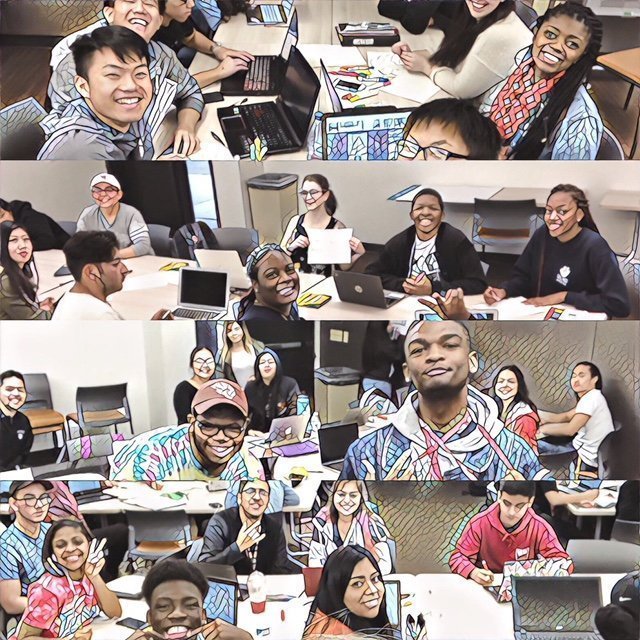
Make Cycle 2
Make Cycle 2– Data Driven: Who collects, owns, and benefits from our data?
In this two week Make Cycle, we will shift from what we track and how we curate our identities to who tracks us and how our identities are constructed by others. We might consider how Google, Facebook, Snapchat, Blackboard Learn, TurnItIn, and many other platforms, collect and control our data. Who collects data? Who owns it? What do they do with it? Who profits or benefits?
We can also think about the disciplines and careers you’ve decided to pursue: how does your particular field (engineering, graphic design, psychology) work with big data? How are people working to represent large data in visually appealing ways?
One of the articles we will read is “A Guide for Resisting EdTech: The Case Against TurnitIn.” In this article, Sean Michael Morris and Jesse Stommel pose some questions to ask when using digital tools:
-
- Who owns the tool? What is the name of the company, the CEO? What are their politics? What does the tool say it does? What does it actually do?
- What data are we required to provide in order to use the tool (login, email, birthdate, etc.)? What flexibility do we have to be anonymous, or to protect our data? Where is data housed; who owns the data? What are the implications for in-class use? Will others be able to use/copy/own our work there?
We might do some sleuthing ourselves, perhaps looking up sites we frequent and using the questions above to guide our inquiry. We’ll end our two-week data driven cycle by checking out the Data Detox site to see if we can clean up and control some of our digital footprint.
Make Cycle 2 in a nutshell:
First week: Feb 5-9
- Read “The Weaponization of Education Data” by Audrey Watters together. We’ll be following some of the links in her article and sharing what we learn.
- By Friday, Feb 9: Discussion post due in your team’s G+ community. See prompt below.
Second Week: Feb 10-18
- Read “A Guide for Resisting EdTech: The Case Against TurnitIn” by Sean Michael Morris and Jesse Stommel. We’ll use their guiding questions to look at some of our favorite platforms.
- By Sunday, Feb 18: Make 2 due in G+ Team. See prompt below.
Make Cycle 2: Feb 5-9
After reading “The Weaponization of Education Data” by Audrey Watters, write a summary of her article:
- What is she arguing; what is the article about? Walk the reader through the ideas in the article: she starts by…, then she…, next, she…then she ends with…what I might call a slow, thorough summary. Use a quote or two from her article to support your summary of her ideas.
- Follow one of the links from her text and provide a summary of that article too. What is one of the articles she links to about? How does this article support Watters argument?
- Finally, what do you think about her ideas? What is interesting or puzzling? What questions are you left with?
- End by citing the article using whatever citation form you prefer (MLA, APA, other?).
- Due in your G+ team page Friday, Feb 9
I would expect this post to be 3-4 paragraphs that include a quote or two from the article(s). This will be a substantive response.
Make Cycle 2: Feb 10-18
Make 2: due Sunday, Feb 18 in your G+ team
Here are some ideas for our second make cycle:
- How might you compare what your school data says about you and what your school data leaves out? You might consider thinking through all the stats from your first semester in college: how many tests, how many classes attended (and missed), how many grades, how many hours working or studying? And then what is not accounted for in these numbers: friendships, commutes, homesickness, new places visited. How might you represent these things? Perhaps numbers on one side of a page and film or images on the other? Perhaps try out Piktochart? Or Adobe Spark? You could even represent this in a series of memes (think “what people think I do vs what I really do”)
- You could try out the Data Detox site and write about that experience. What do you learn by going through some of the steps?
- You could take one of the digital platforms you use most and try to discover the answers to the questions posed by Stommel and Morris. What can you learn about Snapchat or Twitter or Facebook or YouTube or Reddit, etc. You could write up what you discover:
- Who owns the tool? What is the name of the company, the CEO? What are their politics? What does the tool say it does? What does it actually do?
- What data are we required to provide in order to use the tool (login, email, birthdate, etc.)? What flexibility do we have to be anonymous, or to protect our data? Where is data housed; who owns the data? What are the implications for in-class use? Will others be able to use/copy/own our work there?
- What data is being collected about you on the platforms you visit? Check out your own Google analytics or check out the Wayback machine and see what your old websites look like (did you ever have a MySpace page?) What can you find out about your Twitter analytics or Snapchat or Instagram? Then, once you gather all the analytics from your sites, think about how you might create a visual representation.
- Another idea? Let us know…. Your goal: create something that represents the ideas we’ve been working with related to our data driven lives.

